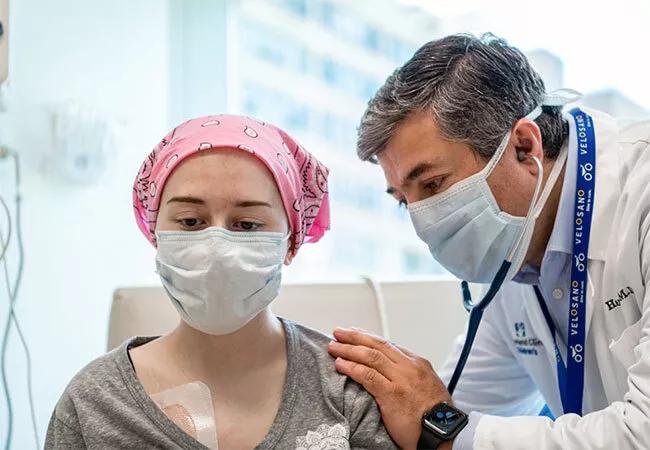Despite psychosocial challenges, quality of life in AYAs is similar to older adults undergoing blood and marrow transplantation

Advertisement
Cleveland Clinic is a non-profit academic medical center. Advertising on our site helps support our mission. We do not endorse non-Cleveland Clinic products or services. Policy
Blood and marrow transplantation (BMT) is a potentially curative treatment for adolescent and young adults (AYA) with hematologic cancers. However AYAs undergoing BMT are susceptible to many age-specific psychosocial factors that may impact transplant outcomes and quality of life (QOL).1
Although outcomes for AYAs undergoing BMT have improved in recent years, they remain inferior to younger children.2 Inferior outcomes may be due to disease or host biology, behavioral differences, and/or treatment settings and available support.2
Several psychosocial challenges unique to AYA patients have been postulated to impact outcomes. AYAs may have significant disruption to education plans, and unemployment during and after treatment is common. Unemployment and underemployment challenges coupled with the high cost of medical care can lead to financial toxicity.
Psychosocial challenges include disruption of normal life-stage processes, such as forming peer and romantic relationships, exploring autonomy, initiating sexual exploration, completing education, establishing careers and raising families.3,4 Adolescence and young adulthood is also a time frame when several psychological conditions develop, such as anxiety, depression, panic and mood disorders.5
With these psychosocial challenges in mind, we aimed to determine if AYAs have inferior QOL before and after allogeneic BMT compared to other adults.6 Additionally, we were interested in whether or not pre-hematopoietic cell transplantation QOL for AYA transplant recipients changed over time.
Advertisement
QOL data were collected prospectively before and after transplant on 431 recipients age 15-60 from 2003-2017 using the Functional Assessment of Cancer Therapy-Bone Marrow Transplantation (FACT-BMT) questionnaire. Interestingly, QOL did not differ among younger AYA, older AYA or older adults at any time in the first year after allogeneic BMT for total scores or for any of the individual domains of the FACT-BMT assessment. Further, from 2003-2017, AYA allogeneic recipients experienced modest improvement in total FACT score, suggesting improvements in QOL. Together these data suggest that despite unique challenges for AYA BMT patients QOL is not severely impaired compared to older adults, and QOL has improved for this population in more recent years.
Advertisement
Dr. Rotz is Assistant Professor of Pediatrics at Cleveland Clinic Lerner College of Medicine of Case Western Reserve University.
Advertisement
Advertisement

First-of-its-kind research investigates the viability of standard screening to reduce the burden of late-stage cancer diagnoses

Global R&D efforts expanding first-line and relapse therapy options for patients

Study demonstrates ability to reduce patients’ reliance on phlebotomies to stabilize hematocrit levels

A case study on the value of access to novel therapies through clinical trials

Findings highlight an association between obesity and an increased incidence of moderate-severe disease

Cleveland Clinic Cancer Institute takes multi-faceted approach to increasing clinical trial access 23456

Key learnings from DESTINY trials

Overall survival in patients treated since 2008 is nearly 20% higher than in earlier patients